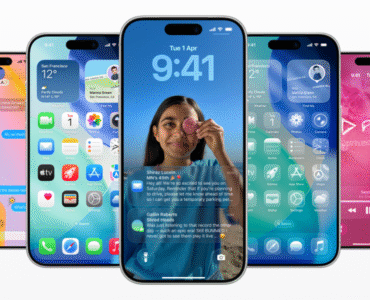Voice Search Optimization 2025: SEO & Content Strategies for Smart Assistants
The way people search the internet is evolving rapidly. With the rise of Amazon Alexa, Siri, Google Assistant, and other voice-enabled devices, voice search has moved from a novelty feature to a core digital behavior. By 2025, more than 50% of all digital searches globally are expected to be voice-activated, fundamentally changing how businesses must approach content strategy and SEO.
For digital marketers and businesses, ignoring voice search optimization now means ceding ground to competitors who are already showing up first when users “ask” instead of “type.” This blog explores actionable strategies, keyword trends, technical requirements, and advanced techniques for winning at voice-driven search.
Why Voice Search Matters: The Data Behind the Trend
- Voice commerce sales will surpass $164 billion globally in 2025, a figure doubling from just a few years prior.
- Over a third of U.S. homes now own a smart speaker.
- “Near me” queries and local intent voice searches are skyrocketing, with 76% of people who search for a local business via voice visiting within a day.
- Gen Z and Millennials are particularly reliant on voice, with usage rates above 60% on mobile.
Trending Keywords for Voice Search Optimization
- Voice search optimization 2025
- Conversational search SEO
- Smart assistant search strategies
- Featured snippets optimization
- Natural language keywords
- Local voice SEO
- FAQ content for voice search
- Structured data for voice devices
- Mobile voice search
- Long-tail conversational queries
How Voice Search Differs from Traditional Search
The biggest shifts in voice search, compared to standard text search:
- Conversational Language: Searches sound more like natural speech. Instead of “weather New Delhi,” users ask, “What’s the weather in New Delhi today?”
- Question Phrases: Voice queries begin with “what,” “how,” “when,” “why,” “where,” and “who.”
- Long-tail Keywords: Phrases are longer, often 5-10 words, reflecting how people speak.
- Local Intent: “Near me” and hyperlocal queries dominate, making local SEO essential.
- Direct Answers: Users expect instant, clear answers—often sourced from featured snippets.
- Mobile and Multimodal Use: Most voice searches come from mobile, but smart speakers, cars, wearables, and TVs drive the multimodal future.
Key Strategies for Voice Search Optimization
1. Focus on Conversational, Long-Tail Keywords
- Analyze verbal language trends and use tools like Google’s “People Also Ask,” AnswerThePublic, and SEMrush for question-based query research.
- Prioritize natural sentence structures: “How do I make vegan curry?” vs. “vegan curry recipe.”
- Cluster keywords by intent: informational (“What is vegan protein?”), navigational (“Where can I buy vegan snacks near me?”), and transactional (“Order vegan protein powder”).
2. Create Voice-Friendly Content Formats
- Write content that directly answers common questions within the first 40-50 words.
- Break up pages with clear H2/H3 headings mirroring how people ask questions.
- Use bulleted lists and numbered steps for “how-to” and “best of” queries.
- Build exhaustive FAQ pages targeting trending voice search questions for your product/service.
3. Optimize for Featured Snippets (Position Zero)
- Structure answers above the fold with concise, fact-based responses for “what is,” “how to,” and “why” queries.
- Frequently update old posts with question-based subheadings and digestible paragraphs.
- Use schema markup (especially FAQ, HowTo, and Q&A) to help Google showcase your content.
4. Prioritize Local SEO
- Claim and update Google Business Profile; ensure consistency in NAP (Name, Address, Phone).
- Target location-based and “near me” keywords (e.g., “best pizza place near Marine Drive”).
- Add local business schema, respond to reviews, and create neighborhood-specific landing pages.
- Mention landmarks and local events—voice users often add these details in their queries.
5. Emphasize Mobile Optimization
- Ensure responsive design—nearly all voice queries are made on mobile or smart devices.
- Improve page speed; voice assistants prefer fast-loading answers.
- Use large, legible fonts and touch-friendly layouts for users who transition between voice and tap.
6. Technical SEO for Voice
- Implement HTTPS for security (Google prioritizes secure results for voice queries).
- Add schema markup for product, question, event, and local information.
- Use clean, crawlable code and XML sitemaps; keep navigation shallow (ideally within 3 clicks).
7. Structure Content for Q&A and Context
- Arrange content as “question + clear direct answer” at the top of each section.
- Mix answer boxes, definitions, lists, and step-by-step guides.
- Build resource hubs targeting voice search personas—think “complete beginner’s guide to vegan diets” or “top tips for mobile banking beginners.”
Advanced Voice Search Optimization Techniques
Conversational AI and Natural Language Processing (NLP)
- Use AI writing assistants to spot trending, voice-driven phrasings.
- Integrate NLP-powered chatbots on landing pages to capture long-tail queries and provide instant spoken answers.
Generative Engine Optimization (GEO)
- Anticipate how large language models summarize and deliver answers at the top of search and voice results.
- Create authoritative, all-in-one guides and cornerstone pages—make your page the “go-to” spoken answer for popular questions.
Accessibility & Audio-First Content
- Transcribe videos, podcasts, and webinars into text snippets optimized for voice snippets.
- Use short paragraphs, plain speech, and pronunciation guides for jargon or brand names.
Continuous Performance Tracking
- Use Google Search Console’s “Search Queries” filter to monitor voice-specific long-tail keyword growth.
- Test content on smart devices and assistants; tweak based on what is actually read out loud.
- Analyze bounce rate and engagement data for FAQ and Q&A pages—low dwell time can signal vague answers.
Example Voice Search Keywords and Content Structure
Trending Voice Search Queries for 2025:
- “What’s the best Indian restaurant near me open now?”
- “How do I set up my smart AC with Alexa?”
- “Remind me to drink water every hour.”
- “Show me the safest routes to work with less traffic.”
- “Who is the CEO of Tesla in 2025?”
Real-World Case Studies
Case Study 1: Local Restaurant Chain
A Mumbai-based restaurant optimized its Google Business Profile, built neighborhood landing pages, and added FAQ schema for “best biryani near me.” Within three months, voice-search-driven reservations jumped by 30%.
Case Study 2: E-commerce Brand
A home gadget brand produced how-to videos, added transcripts, and rewrote product description pages with natural language question-and-answer formats. Their “how to reset your smart thermostat” post achieved a featured snippet, becoming the most-read result on Google Assistant.
Future-Proofing Your Voice SEO
- Integrate with emerging platforms (car dashboards, wearables, VR/AR interfaces).
- Prepare for multilingual, accent-aware queries by optimizing for region-specific language.
- Build partnerships with device manufacturers or skills/apps for Alexa/Google.
Voice Search Optimization Checklist (2025)
- Research long-tail, conversational voice keywords.
- Update mobile UX and page speed.
- Structure Q&A, FAQ, and step-by-step content with schema.
- Add local SEO and hyperlocal pages.
- Target featured snippets and voice answer boxes.
- Test content on actual voice assistants.
- Use analytics to monitor “question-style” keyword growth.
Conclusion
Voice search optimization in 2025 is not just a technical SEO tweak—it’s a fundamental rethink of content, relying on natural language, structured data, and fast, accessible design. Brands that adapt to the growing voice-first ecosystem will gain visibility at the critical moment when users speak, not type, their needs. By embracing conversational keywords, question-based content, local SEO, and technical enhancements, websites can claim top positions in voice-based results and ride the wave of the smart assistant revolution.
Related Posts
Categories
- Advertising(1)
- Branding(4)
- Developing(4)
- Illustrations(3)
- knowledge(2)
- Marketing(2)
- Mockups(4)
- technology(2)
- Travel & Tourism(2)
- World Explore(2)
Recent Posts
iOS 26 Launch, Download, Eligible Devices, Features & Liquid Glass Wallpaper
Social Commerce in 2025: In‑App Shopping on Instagram, TikTok, YouTube
AI Integration & Automation: Personalization

At Vajraah Digital, we're not just a digital agency; we're your partners in the digital realm, dedicated to amplifying your brand's presence, engagement, and success.







